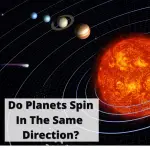This article explains the differences between asterisms and constellations, and finishes with some popular asterism examples.
Asterism vs Constellation: Summary Explanation
While both asterisms and constellations are patterns of stars, there is a key difference between the two: asterisms are unofficial star patterns that are not recognized by the International Astronomical Union (IAU), while constellations are official IAU-recognized star patterns.
What Is An Asterism?
An asterism is a pattern of stars that is not an official constellation.
Asterisms are often used to help people find and identify constellations.
The Big Dipper, for example, is an asterism that is located within the constellation Ursa Major.
What Is A Constellation?
A constellation is an official grouping of stars as defined by the International Astronomical Union (IAU).
There are 88 constellations in total, and they are spread out across the night sky.
Each constellation is typically associated with a mythological figure or character.
Is An Asterism a Constellation?
No. While an asterism can be part of a constellation, it is not itself a constellation.
Why Are Some Grouping Of Stars Constellations While Others Remain Asterisms?
The difference between asterisms and constellations comes down to a matter of official recognition. In order for a grouping of stars to be considered a constellation, it must be formally recognized by the International Astronomical Union.
To become recognized, a proposed constellation must meet a few criteria.
First, it must be made up of stars that are all relatively close to each other in terms of distance from Earth.
This criteria is necessary to ensure that the stars making up the proposed constellation are actually physically close to each other in space, and not just appear to be close together from our perspective on Earth.
Second, the proposed constellation must be distinct and easily recognizable.
This criteria is important to ensure that the constellation will be useful for people who are trying to map and identify stars in the night sky.
Finally, the proposed constellation must not overlap with any existing constellations.
This criteria is in place to prevent confusion and help people easily identify the different constellations in the night sky.
Are There Any Asterisms That Are Part Of Constellations?
Yes, there are some asterisms that are actually part of constellations.
For example, the Big Dipper is an asterism located within the constellation Ursa Major.
Other examples of asterisms that are part of constellations include the Teapot in Sagittarius and the Pleiades in Taurus.
Here’s a List of Some Other Well-Known Asterisms That Are Part Of Constellations:
The Big Dipper – Ursa Major
The Little Dipper – Ursa Minor
Orion’s Belt – Orion
The Southern Cross – Crux
The North Star – Polaris
The Seven Sisters – Pleiades
The Teapot – Sagittarius
What Are Some Other Asterism Examples?
There are many other asterism examples in addition to the ones already mentioned.
Some other well-known asterisms include the Summer Triangle, Winter Hexagon, and Great Diamond.
The Summer Triangle is an asterism made up of three bright stars: Vega in Lyra, Altair in Aquila, and Deneb in Cygnus.
The Winter Hexagon is an asterism made up of six bright stars: Sirius in Canis Major, Procyon in Canis Minor, Pollux and Castor in Gemini, Aldebaran in Taurus, and Capella in Auriga.
The Great Diamond is an asterism made up of four bright stars: Arcturus in Bootes, Spica in Virgo, Denebola in Leo, and Regulus in Leo.
Is Cassiopeia a Constellation or an Asterism?
Cassiopeia is a constellation.
It was officially recognized by the International Astronomical Union in 1930.
Is Draco a Constellation or an Asterism?
Draco is a constellation. It was also officially recognized by the International Astronomical Union in 1930.
Is The Great Square Of Pegasus an Asterism?
The Great Square of Pegasus is an asterism, not a constellation.
It is made up of four stars: Markab, Scheat, Algenib, and Alpheratz.
While it is not an official constellation, it is still a well-known grouping of stars that is easy to spot in the night sky.
Is Leo an Asterism?
No, Leo is not an asterism.
It is a constellation that was officially recognized by the International Astronomical Union in 1930.
However, The Sickle, series of stars shaped like a backward question mark in the constellation Leo, is an asterism.
Is Ursa Minor a Constellation or Asterism?
Ursa Minor is a constellation.
It was officially recognized by the International Astronomical Union in 1930.
However, The Little Dipper, an asterism located within Ursa Minor, is one of the most well-known asterisms in the night sky.
Is Orion’s Belt an Asterism?
Yes, Orion’s Belt is a great example of an asterism.
The three stars that can be found around the middle of the constellation Orion are easy to find and assist stargazers in locating the Orion constellation.
It is actually one of the most famous and easy to find asterisms in the night sky.
You might also like:
- What Are Constellations Used For?
- A Guide To Greek Constellations
- A Guide To Navigation Constellations
- Constellations For Love (A List)
- Constellations For Friendship (A List)
- Animal Constellations (a Guide)
- Autumn Constellations
- Spring Constellations
- Winter Constellations
- Summer Constellations
- What Are Circumpolar Stars?






